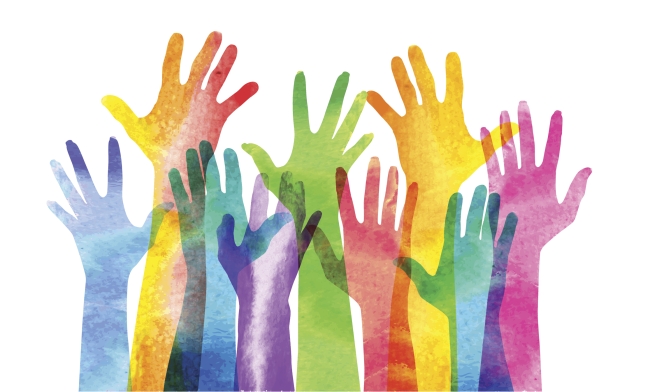You have /5 articles left.
Sign up for a free account or log in.

iStock
Tuition hikes are linked to decreased student diversity on public college campuses, according to a new paper finding the strongest effect at two-year institutions and nonselective four-year institutions.
But tuition hikes can help public colleges’ diversity -- when those hikes take place at private universities in the area. Public institutions can actually see the diversity of their student bodies increase when nearby private institutions increase their tuition, researchers found.
The paper, published Friday in the journal Research in Higher Education, builds on the long-established idea that increases in tuition can depress overall college enrollment. Its findings represent a new challenge for public institutions that argue financial aid offsets the negative impacts of tuition hikes. Researchers Drew Allen and Gregory C. Wolniak sought to find out how tuition increases affect racial and ethnic diversity at public colleges and universities, as well as how effects on diversity might vary depending on institutions’ selectivity.
“I think people have had an intuition and perhaps an assumption that if you hike up tuition, something may be going on with the overall student body and diversity,” said Allen, who is the executive director of the Initiative for Data Exploration and Analytics for Higher Education at Princeton University. “The value of this study is providing some evidence and numbers behind it.”
Allen and Wolniak analyzed pooled data from the Integrated Postsecondary Education Data System from 1998-99 and 2011-12. Their final data set included 597 public four-year institutions and 1,000 public two-year institutions.
The researchers controlled for factors including the diversity of high school graduates in each state, average institutional financial aid, local unemployment, the number of other institutions in the area and those nearby institutions’ tuition levels. They calculated the net effects of tuition changes on institutional diversity, which they defined as the likelihood that any two students chosen at random on a campus would be from different racial or ethnic groups.
Research shows diversity matters on campuses, and not just because it is politically important, said Wolniak, who is a clinical associate professor of higher education and directs the Center for Research on Higher Education Outcomes at New York University.
“From a developmental standpoint, we see that diversity and overall ideas of campus climate drive gains in cognitive development, attitudes toward satisfaction and a sense of well-being -- and even the things policy makers care so much about, like retention and graduation,” Wolniak said. “And here we see evidence that tuition increases, that vexing problem, decrease diversity on campus.”
At all public four-year colleges in their data set, Allen and Wolniak found racial and ethnic diversity dropped by 0.013 percent for every 1 percent increase in in-state tuition and fees. Put another way, at the average four-year institution, a theoretical $1,000 increase in tuition and fees would lower the racial and ethnic diversity of full-time students on a campus by 0.22 percent.
The relationship was stronger when looking only at nonselective institutions. Every 1 percent increase in in-state tuition and fees at nonselective institutions was connected to a 0.141 percent drop in full-time undergraduate diversity. That means a $1,000 increase in tuition and fees would be linked to a 2.6 percent drop in racial and ethnic diversity on campus.
“Look at just all public four years and you don’t see a ton going on,” Allen said. “Specifically look at the less selective four-year institutions, the nonselective institutions -- that is the primarily open-access institutions -- there does seem to be a negative relationship there.”
The negative relationship between tuition and diversity was even stronger when examining only full-time, first-time freshmen at nonselective public institutions. For those student bodies, every 1 percent increase in in-state tuition and fees corresponded to a 0.238 percent drop in diversity. That’s a 4.5 percent decrease in racial and ethnic diversity for every $1,000 increase in tuition and fees.
Nonwhite students made up just 25.3 percent of all enrolled students at highly selective institutions, the authors noted. Nonwhite students were 42.6 percent of students at nonselective institutions.
“This result is particularly notable because nonselective public institutions are known to more likely be points of entry into higher education for underrepresented populations, including ethnic/racial minorities,” they wrote.
It should also be noted that nonselective institutions tend to have fewer resources than flagship universities. That could further hamstring their ability to offset tuition hikes with increases in financial aid.
Meanwhile, a 1 percent increase in average tuition and fees at nearby private four-year institutions is associated with a 3 percent increase in diversity among a public institution’s total enrolled student body and among its first-time freshmen.
The finding reinforces the idea that public and private institutions exist in an educational ecosystem, Wolniak said.
“As you see the private tuition going up, that benefits diversity at the publics,” he said. “And that’s across the board.”
At two-year colleges, meanwhile, a 1 percent increase in tuition was linked to a 0.019 percent decrease in diversity among full-time students. So a $1,000 increase in tuition and fees was associated with a 1.4 percent decrease in racial and ethnic diversity across the entire student body. A larger effect was present for first-time freshmen -- every 1 percent increase in tuition was connected to a 0.039 percent decrease in first-time freshmen at two-year colleges.
The research could have an impact on individual institutions’ decision making, Allen suggested. Those considering tuition changes might want to examine how enrollment could be affected in different racial, ethnic and income groups.
It also suggests several avenues of additional research. For example, Allen and Wolniak didn’t examine public flagship universities to see if they mirrored the effect of private universities -- if flagships drove more diversity at nonselective institutions when they raised tuition. The research also invites more scrutiny of the way geography and surrounding institutions influence higher education, Allen said.








